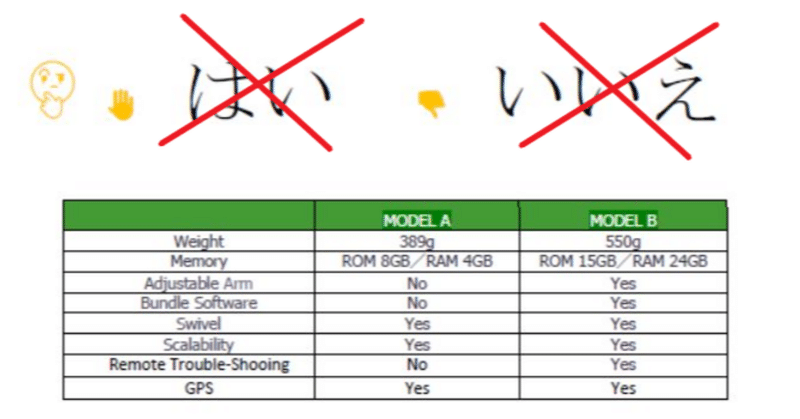
The Difficulty of Translating YES and NO into Japanese
Imagine you are translating specification tables containing YES and NO by the dozen. But all you have is an excel file with random entries of terms without any context. 🤷♀
Obviously, their straight translations, #はい and #いいえ do not work here.
Depending on the context, YES / NO in specification tables can mean ..
対応 / 非対応 (= compatible / not compatible)
同梱 / 非同梱 or 付属/非付属 (= included / not included)
搭載 / 非搭載 (= mounted / not mounted)
有 / 無 (= available / not available)
可 / 不可 (= possible / not possible)
適用/ 非適用 or 該当 / 非該当 (= applicable / not applicable)
and many more.
When all my research for context fails, I simply have to ask the client to supply me with the necessary context, preferably a screen shot of the respective page(s).
💡 When that’s not possible, I still know a trick. Namely, I can resort to some symbols to represent YES and NO in Japanese:
○ / ×
○ / ―
I wonder how this problem is dealt with in MT (#machine #translation ). Especially since MT outputs are by no means consistent.
I know one thing for sure. MT will not actively seek the client’s advice to shed light on the “black box“ of AI.
#language #expertise #English #japanese #german #TranslationServiceArai
この記事が気に入ったらサポートをしてみませんか?
